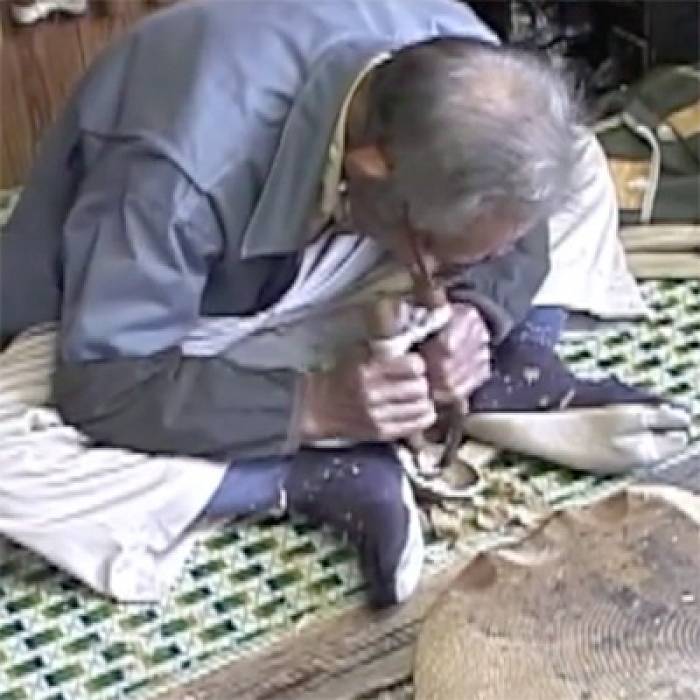
Film Screening and Discussion with Jarrod Dahl
Aired on Thu, Mar 25 at 7:00pm
Join us to watch this fascinating short documentary filmed in 2006 in Nara Prefecture. After the fim Jarrod will lead a short discussion about the film and share photos of spoon carving tools and a few spoons he brought back from his travels to Japan in 2018 and 2019.
Since at least the 19th century, Ootou village was famous for wooden ladle production. When the production was at its peak, all the houses in the village engaged in ladle carving, and supplied to Osaka, Kyoto, and Nara. The staple food in this area was rice porridge so the ladle was an essential item for their daily life.
Chestnut was the main material for ladle carving. Chestnut is easy to split and has strong water-resistant property because of its tannin. Ladles used to be made all over Japan and they used locally available material. Popular species for ladle in other places were Hoonoki (magnolia), Tochi (horse chestnut), Yamazakura (cherry).
Kaoru Atarashi was born in 1927 and was the fifth generation spoon carver. He started carving ladles in 1946 at 19 years old. Up until 1970, the ladle carvers of the village used a small barn in the forest where they worked and lived. They moved from place to place in search for material. They would travel back home only 4 times a year. This type of itinerant woodworkers were called Kijishi. There were also Kijishi who were woodturners. The Kijishi at one time practiced all over Japan.
When he was young, there were 60 families in his community and 80 families in the nearby community that were all engaged in ladle carving.
In 1970 He set up his workshop at his home.
At Ootou village, one carver produced at least 100 ladles a day. They worked from 5 am until 10 pm. The story goes that ladle carving was such hard work that the carvers died while resting their body on the chopping block.
Upcoming Events
Previous Events
- Webinar: Norwegian Baskets Lunch and Learn Webinar with Hege Aasdal
- Video: Lunch and Learn: A Conversation with Jan Harm ter Brugge with Jögge Sundqvist and Peter Lamb
- Webinar: Tim Cahill: 50 Years of Adventure Travel
- Webinar: 2023 Members’ Gathering and Annual Meeting
- Webinar: Stories from the Blacksmith Shop at Sätergläntan
